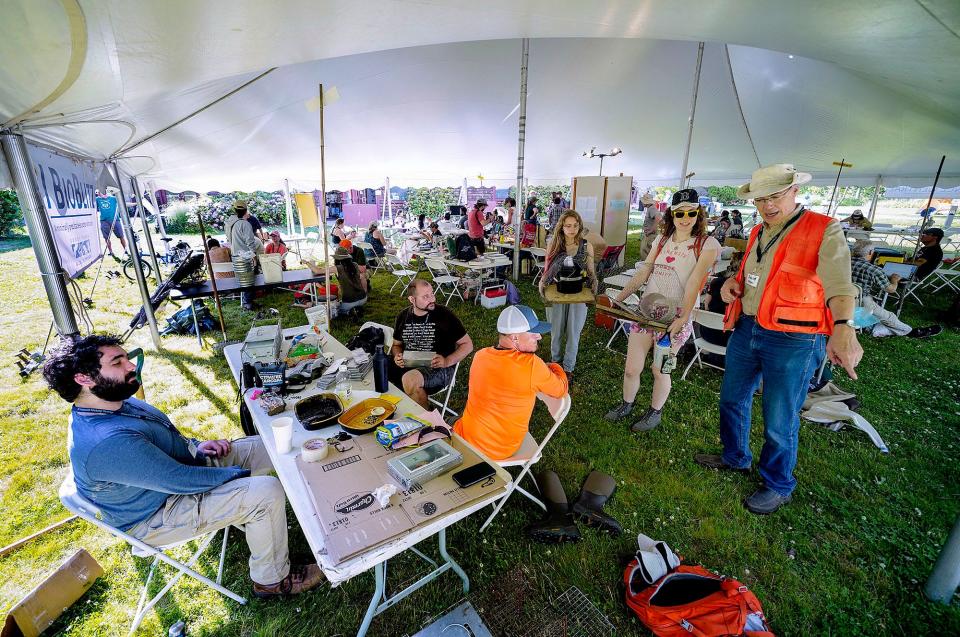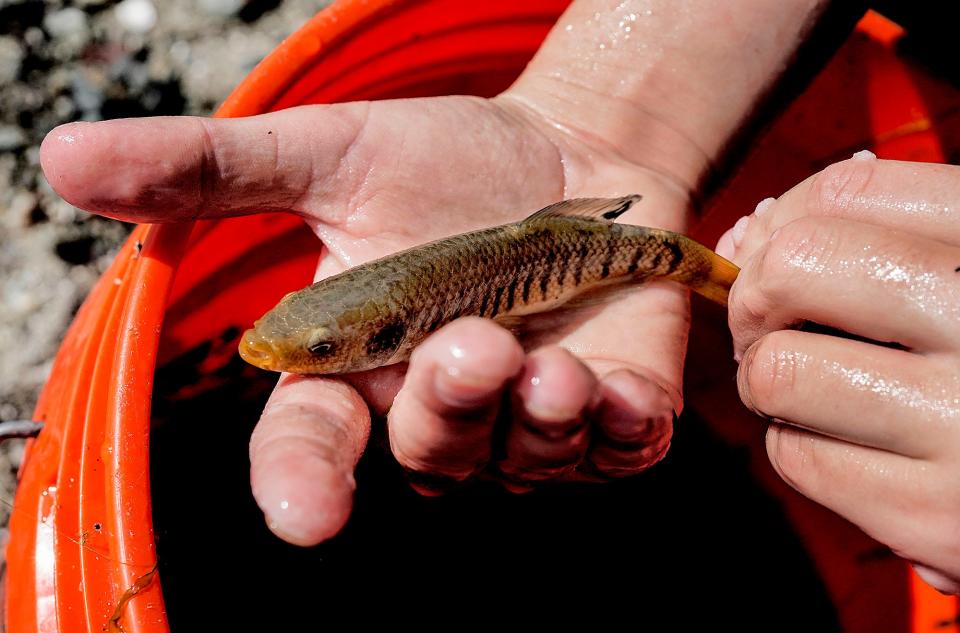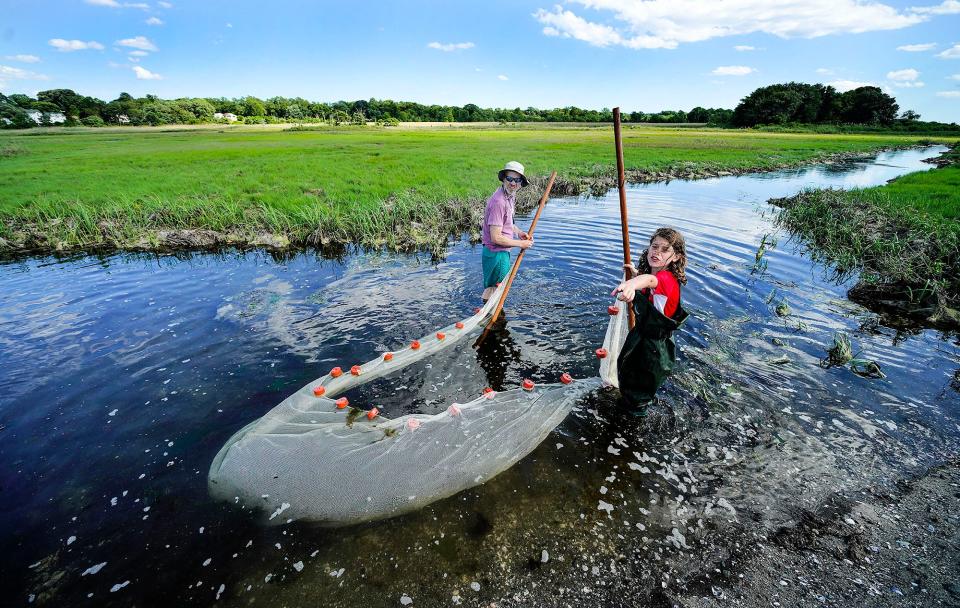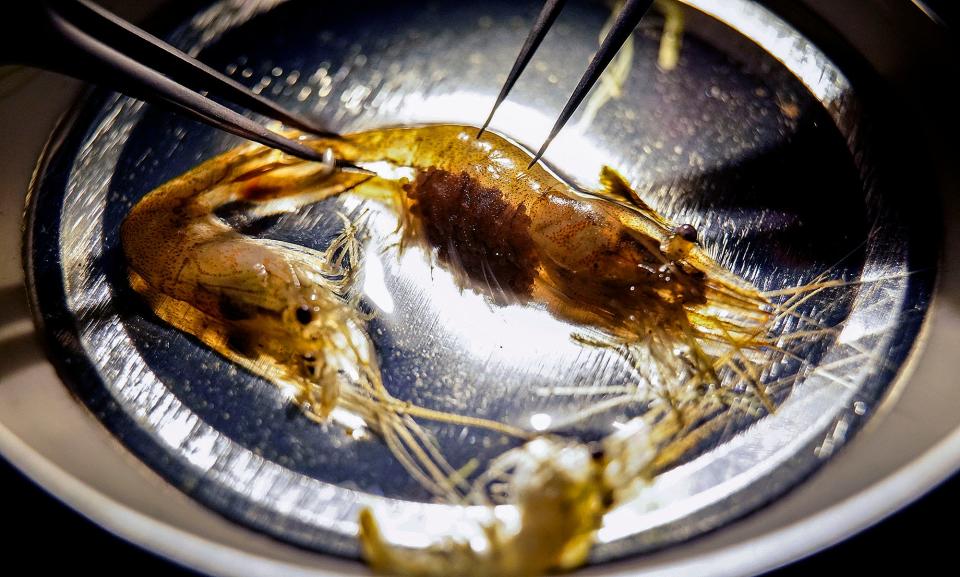What's a BioBlitz? Amy Russo joins volunteers recording abundant life in ordinary places
Clad in cargo shorts and sun hats, butterfly nets, bug boxes and microscopes in tow, some 200 science enthusiasts set out this month to see what Rhode Island’s naturescape holds.
Among the group ages 10 to 80-something were former teachers, current students, state employees and hobbyists who pass the time identifying plants in their backyards.
It’s known as the BioBlitz, a 24-hour marathon, organized by the nonprofit Rhode Island Natural History Survey, during which participants scour a tract of land for every living plant and animal they can find.
It might not sound like a party, but it has its fair share of fanfare.
Amy's Rhode: As Providence's Graduate hotel turns 100, Amy Russo checks into all those spooky rumors
Amy Russo follows their footsteps: Which famous figures have visited RI's Kingston Village?
Standing under a tent, the organization’s executive director, David Gregg, rallies his troops with the honk of an air horn. In all directions, teams march out into a 4-mile expanse of Audubon's Nature Center and Aquarium in Bristol. Some are on bikes. Some are in boots. Some are young. Some are old.
Amy's Rhode: What's new with RI's rugelach maven? Amy Russo hears plans for expanded food truck menu
Amy's Rhode: RI's Touro Synagogue, icon of religious liberty, has a lot to teach you during tours
Here, everyone has adopted a tribe of sorts. One gathers moths while another corrals small creatures with live animal traps. In one corner of the refuge, a three-member crew erects a massive light trap using a white sheet, onto which they anticipate beetles will attach themselves. Near the parking lot, a team specializing in lichens peers through a magnifying glass at a rock wall to view the green growths. Within the span of a half hour, they identify 18 species on the soil, stone and trees.

“Everybody here is sharing what they know,” explains Gregg. “Let’s say you get interested in, I don’t know, butterflies. How do you even start knowing about butterflies? Well, there’s probably somebody who’s been doing butterflies for 45 years who wishes they could find a young person to learn what they know. Well, here’s the place.”
Amy's Rhode: Amy Russo finds harmony with Jamestown's Everybody Chorus
Amy's Rhode: Gravestones tell a lively story about Westerly granite on Amy Russo's cemetery tour
For Gregg, butterflies were the start of his journey at age 13.
“I collected butterflies for a while, and then I tried moths, and I looked at beetles and I just kept going,” he recalled. “Every time that I got to the end of one group, I decided there was something else I had to look for.”

Years later, people like Gregg finally had a place to put their curiosity to work. In 1996, the BioBlitz was born when a United States Geological Survey employee thought up the concept, initially created for professional scientists. In 2000, Gregg’s organization hosted a version for everyone, from bug buffs to those intrigued by the world around them. That year, in Roger Williams Park, more than 660 species were identified.
Amy's Rhode: A new Buddy in Providence: How Amy Russo's rescue dog is repaying her with friendship
Amy's Rhode: Roger that: Amy Russo goes one-on-one with RI park ranger who plays founder Roger Williams
Since then, roughly 80% of participants return annually to take part in what looks more like a big family outing.

“I love that it’s this intersection of a huge spectrum of ages and backgrounds and levels of knowledge and everybody just rolls up their sleeves and does it together,” says program administrator Kira Stillwell. “There’s incredible teaching and sharing that happens.”
There are also incredible finds. According to Gregg, each year, up to a dozen rare species are located. That includes a nine-spotted ladybug found at Rocky Point in 2014, and the first-ever mosquito fish discovered in the state in Little Compton in 2015.
This year, in total, upwards of 1,000 species were identified.

“The point is, no place is disposable,” Gregg says. “Even the most sort of trampled-on places have hundreds and hundreds and hundreds of species, and so you just need to go look for them.”
New to RI: A creative mix of food, music and art is on menu at Chan's Fine Oriental Dining
New to RI: A wild, wonderful year of change for this Rhode Island rookie
Providence Journal staff writer Amy Russo, a transplanted New Yorker, is looking for new ways to experience her adopted state. If you have suggestions for this column, email her at amrusso@providencejournal.com.
This article originally appeared on The Providence Journal: Bristol community hosts BioBlitz, a 24-hour science marathon

